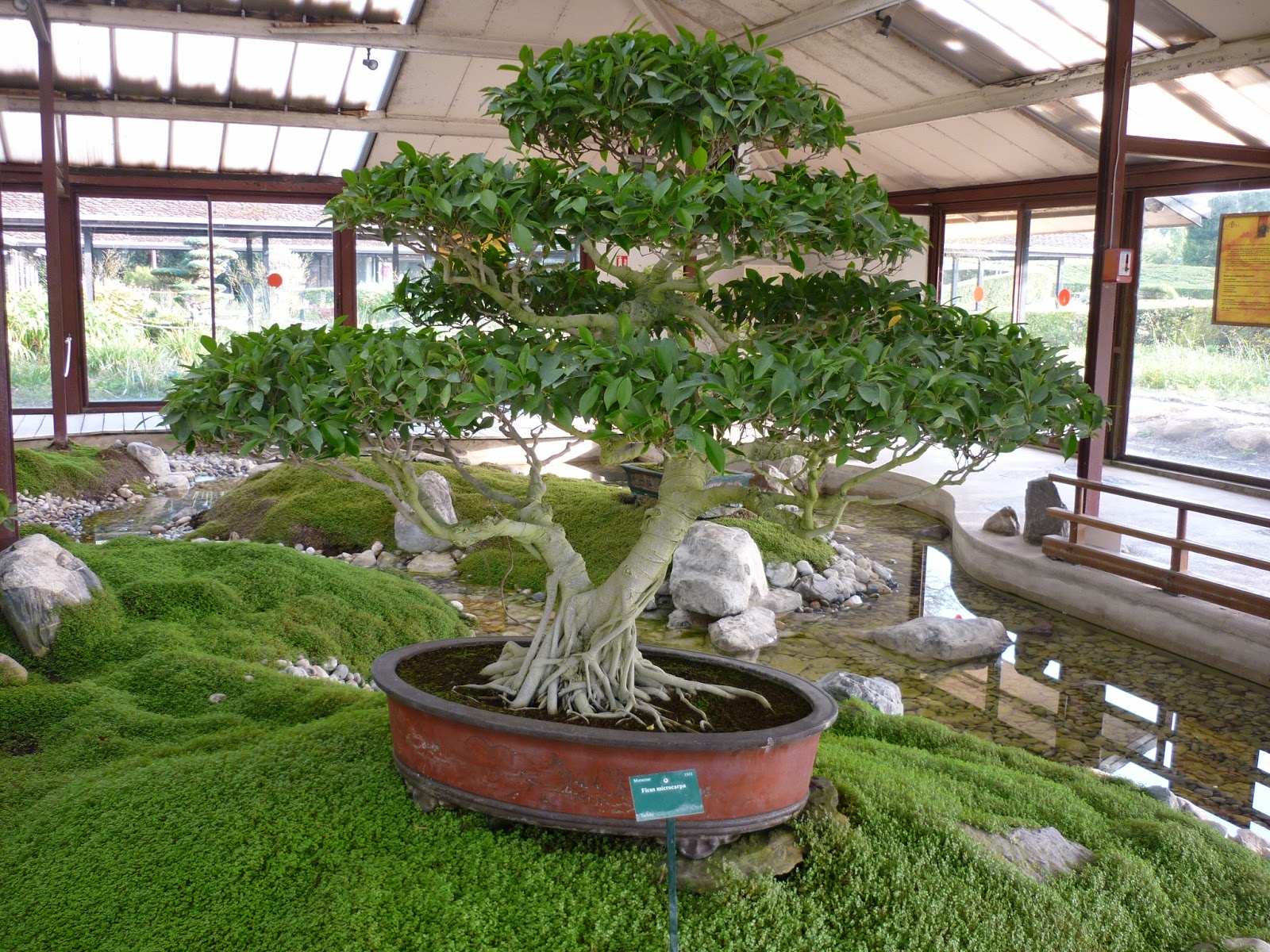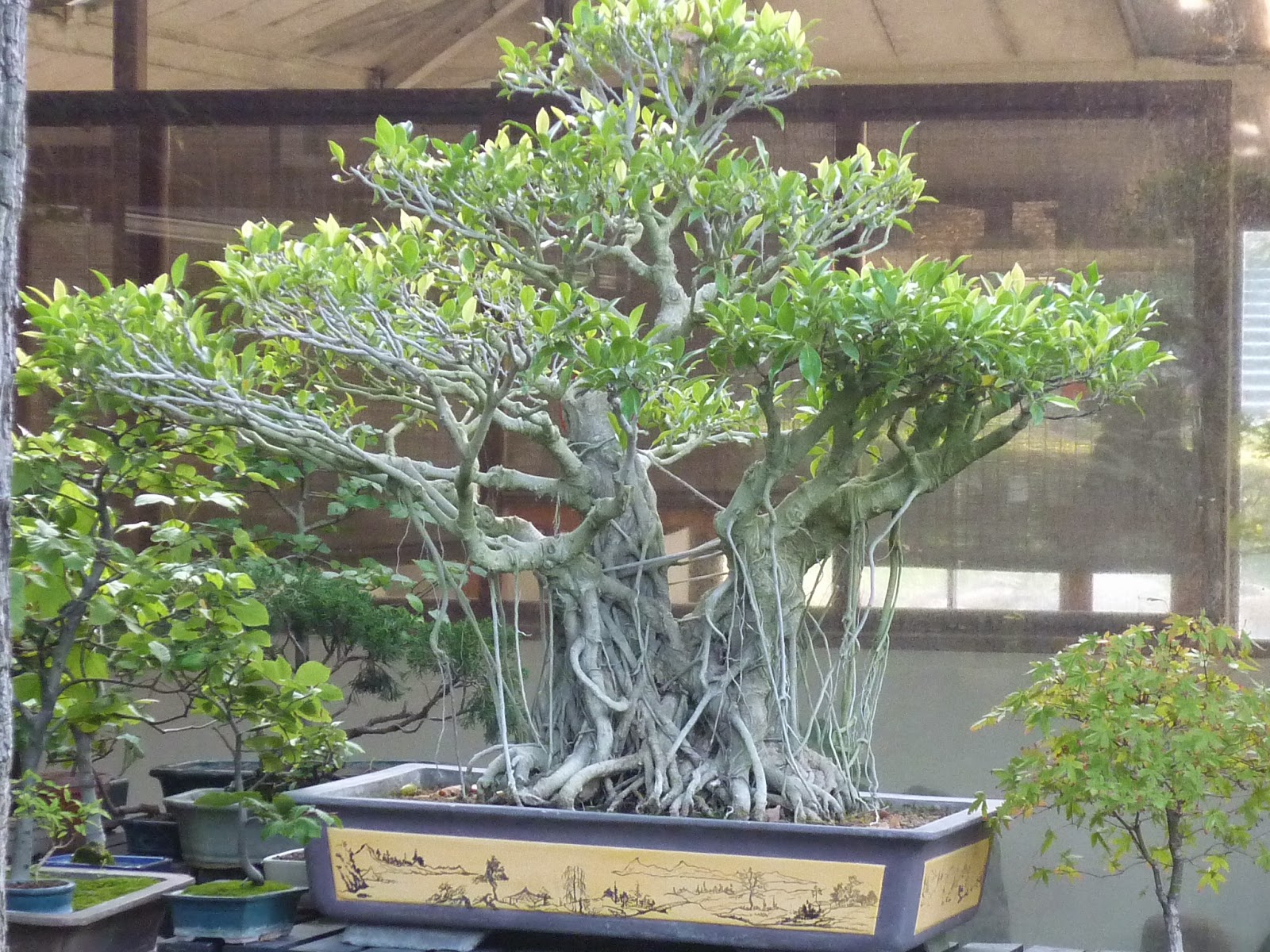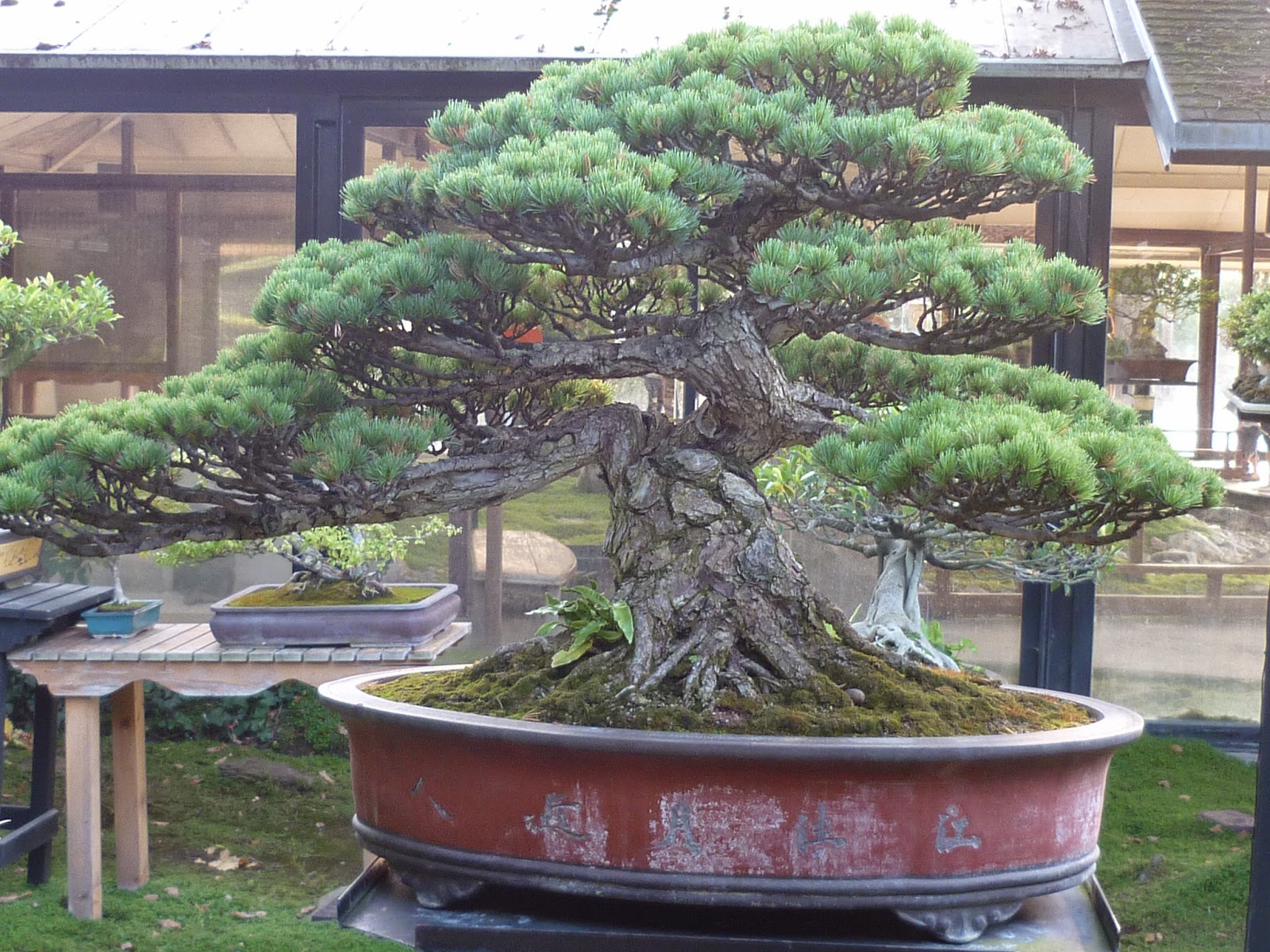Medieval History
 The Park Floral, near the Château de Vincennes, instantly very far away from anywhere else, worlds unto itself, is host to a disparate forest. In shallow pots of terra cotta and ceramic, on superimposed shelves, and gracing mounds are bonsai. Dozens and dozens of them. More than you could ever imagine all in one place. The effect, when you didn't expect to see any such thing, is breath-taking. We just all stood there, quiet, awed, I swear, by their presence. "1930," "1925," "1937" read the dates, marking the trees' survival beyond the lifespans of the ones who first stilled them. Slowed them down. Made them into these beautiful, beautiful things that ache, though, when you look at them. Mac got it all started when he spoke of contemporary critiques of bonsai trees, and then I, insufferably, asked if trees suffer. This lively exchange is a close version of what went on between the kids. Trees can't/don't suffer, but it looks like suffering (and terms like "ligature" get used) - but it also looks beautiful.
The Park Floral, near the Château de Vincennes, instantly very far away from anywhere else, worlds unto itself, is host to a disparate forest. In shallow pots of terra cotta and ceramic, on superimposed shelves, and gracing mounds are bonsai. Dozens and dozens of them. More than you could ever imagine all in one place. The effect, when you didn't expect to see any such thing, is breath-taking. We just all stood there, quiet, awed, I swear, by their presence. "1930," "1925," "1937" read the dates, marking the trees' survival beyond the lifespans of the ones who first stilled them. Slowed them down. Made them into these beautiful, beautiful things that ache, though, when you look at them. Mac got it all started when he spoke of contemporary critiques of bonsai trees, and then I, insufferably, asked if trees suffer. This lively exchange is a close version of what went on between the kids. Trees can't/don't suffer, but it looks like suffering (and terms like "ligature" get used) - but it also looks beautiful.
 And so: how can suffering and beauty possibly be combined? (brief excursus into bull fighting and Hemingway). Aren't there ethical problems with the combination of the two? (bull fighting redux). Do we need to think about time and beauty and suffering? Is it the miniaturization that makes it beautiful? Something about being able to grasp an entire banyan tree (if that's what this is) in one glance? One of the main arguments against bonsai being anything other than one of the most beautiful art forms is the effort (and vigilance and concentration, said the wall text) it takes to tend a bonsai. I will be thinking a lot in the coming months about the actions around the word "tend," and what it takes to "tend to," and the work of the bonsai maker is pure dedication, unceasing devotion. There are moments of cutting, others of tying down, the careful attention to be paid to fragile roots that are never allowed to go too deep. Can suffering be conceived other than non-sensorially for the non-human? Can a tree be said to suffer if it is prevented from what it tends towards (to take root, to grow tall, to have its lignin stretch and unfurl)? And yet that, the process and the miniaturization that follows, results in something that is beautiful.
And so: how can suffering and beauty possibly be combined? (brief excursus into bull fighting and Hemingway). Aren't there ethical problems with the combination of the two? (bull fighting redux). Do we need to think about time and beauty and suffering? Is it the miniaturization that makes it beautiful? Something about being able to grasp an entire banyan tree (if that's what this is) in one glance? One of the main arguments against bonsai being anything other than one of the most beautiful art forms is the effort (and vigilance and concentration, said the wall text) it takes to tend a bonsai. I will be thinking a lot in the coming months about the actions around the word "tend," and what it takes to "tend to," and the work of the bonsai maker is pure dedication, unceasing devotion. There are moments of cutting, others of tying down, the careful attention to be paid to fragile roots that are never allowed to go too deep. Can suffering be conceived other than non-sensorially for the non-human? Can a tree be said to suffer if it is prevented from what it tends towards (to take root, to grow tall, to have its lignin stretch and unfurl)? And yet that, the process and the miniaturization that follows, results in something that is beautiful.
 And then Oliver, who had been unusually quiet, said slowly: "But we always think that things that are made when we break the rules are beautiful." That, he went on and here I'm paraphrasing and extrapolating, and I think I get it but I'm still working on it - that beauty is predicated on there being a rule broken rather than obeyed. That beauty emerges amidst broken rules; that norms and beauty aren't actually that exciting of a pair. That for beauty to occur (appear, be recognized, make itself manifest) a rule or a convention needs to be have been broken. Maybe it's the violence behind beauty; Mac said Oliver's idea was approaching the sublime. For Oliver, all of this artifice and vigilance and tending of trees was one big rule break - the rule (of natural law?) that would normally ensure the "natural progression" (a phrase I am looking at more carefully now) of the tree. We find it beautiful, because we broke the rule that said it couldn't be done. There is a triumphalism (over some concept of nature? over that particular tree?) in finding something beautiful. Here is beauty, wrought by humans. Someone who works on bonsai I think would see things more in concert; indeed, a concerted effort between human and tree. A concerted effort to produce these beautiful hybrids of human attention and arboreal tendency. Every trim, every depravation, every period of ligature, is a rule broken, a tendency thwarted and redirected. And then, this impossible being emerging: guided perfection (and I'm never entirely sure if it's the tree following the artist's lead or the artist following the tree's lead), the desire to see wonders (the specific desire, or longing as Susan Stewart would have it, of the miniature), the marvel of a shift in scale. We stayed a very long time in this space presided over by these wondrous trees, the intimacy and complexity of their years of becoming pushing up at beauty itself.
And then Oliver, who had been unusually quiet, said slowly: "But we always think that things that are made when we break the rules are beautiful." That, he went on and here I'm paraphrasing and extrapolating, and I think I get it but I'm still working on it - that beauty is predicated on there being a rule broken rather than obeyed. That beauty emerges amidst broken rules; that norms and beauty aren't actually that exciting of a pair. That for beauty to occur (appear, be recognized, make itself manifest) a rule or a convention needs to be have been broken. Maybe it's the violence behind beauty; Mac said Oliver's idea was approaching the sublime. For Oliver, all of this artifice and vigilance and tending of trees was one big rule break - the rule (of natural law?) that would normally ensure the "natural progression" (a phrase I am looking at more carefully now) of the tree. We find it beautiful, because we broke the rule that said it couldn't be done. There is a triumphalism (over some concept of nature? over that particular tree?) in finding something beautiful. Here is beauty, wrought by humans. Someone who works on bonsai I think would see things more in concert; indeed, a concerted effort between human and tree. A concerted effort to produce these beautiful hybrids of human attention and arboreal tendency. Every trim, every depravation, every period of ligature, is a rule broken, a tendency thwarted and redirected. And then, this impossible being emerging: guided perfection (and I'm never entirely sure if it's the tree following the artist's lead or the artist following the tree's lead), the desire to see wonders (the specific desire, or longing as Susan Stewart would have it, of the miniature), the marvel of a shift in scale. We stayed a very long time in this space presided over by these wondrous trees, the intimacy and complexity of their years of becoming pushing up at beauty itself.
- Archaeologists Establish What Fruit Russians Ate 1000 Years Ago
Archaeologists working at Desyatinny Pit in the historical centre of Veliki Novgorod have found remnants of gardens that used to grow there several centuries back. The find will make it possible to clear out what fruit trees ancient Russians cultivated....
- Of Toasters, Perhaps Flying
Yes, here they areI once took an Anthropology of Metaphor class in which the professor spoke repeatedly of the connection between "emergence" and "emergency" in relation to metaphor. This little word dance of human need has ever since made (the emergence...
- Natural Beauty/acheiropoieta
Agate from Roger Caillois, The Writing of StonesNatural beauty is harder to define than you'd think. And I should read Kant and find out if he provides some transcendental loophole, and I should pull out Umberto Eco and see what he has to say. But...
- Home. Here. Home.
That old tree in that one place.I don't know where to begin. How to separate out any emotion enough to see it and write about it. It's not that there are so many (happiness, gladness, wonder, and memory really are it), it's that they're...
- The Anglo Saxon Studies Colloquium
The Anglo Saxon Studies Colloquium announces two events with Stephen J. Harris (University of Massachusetts) Monday April 20 at Rutgers University 6.00 pm Lecture Murray Hall, Room 302 "Did the Anglo-Saxons Understand Beauty?" Seamus Heaney obliquely...
Medieval History
Bonsai, and what Oliver said
- Archaeologists Establish What Fruit Russians Ate 1000 Years Ago
Archaeologists working at Desyatinny Pit in the historical centre of Veliki Novgorod have found remnants of gardens that used to grow there several centuries back. The find will make it possible to clear out what fruit trees ancient Russians cultivated....
- Of Toasters, Perhaps Flying
Yes, here they areI once took an Anthropology of Metaphor class in which the professor spoke repeatedly of the connection between "emergence" and "emergency" in relation to metaphor. This little word dance of human need has ever since made (the emergence...
- Natural Beauty/acheiropoieta
Agate from Roger Caillois, The Writing of StonesNatural beauty is harder to define than you'd think. And I should read Kant and find out if he provides some transcendental loophole, and I should pull out Umberto Eco and see what he has to say. But...
- Home. Here. Home.
That old tree in that one place.I don't know where to begin. How to separate out any emotion enough to see it and write about it. It's not that there are so many (happiness, gladness, wonder, and memory really are it), it's that they're...
- The Anglo Saxon Studies Colloquium
The Anglo Saxon Studies Colloquium announces two events with Stephen J. Harris (University of Massachusetts) Monday April 20 at Rutgers University 6.00 pm Lecture Murray Hall, Room 302 "Did the Anglo-Saxons Understand Beauty?" Seamus Heaney obliquely...
